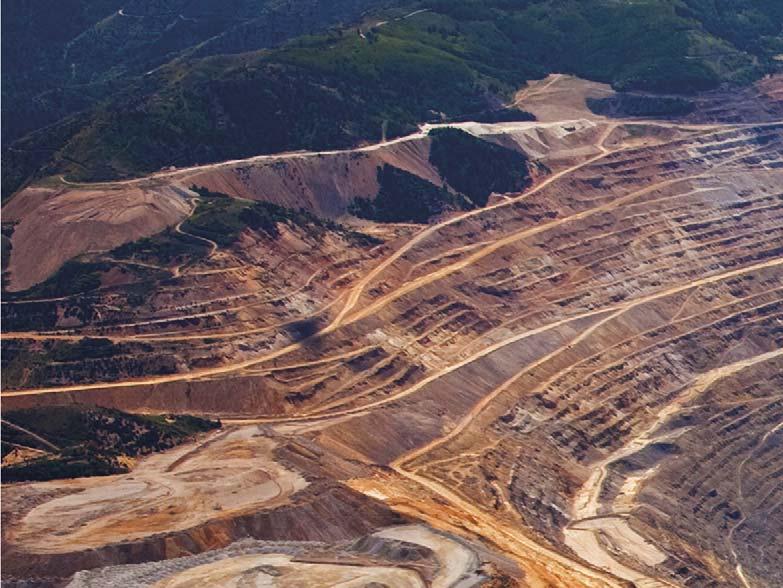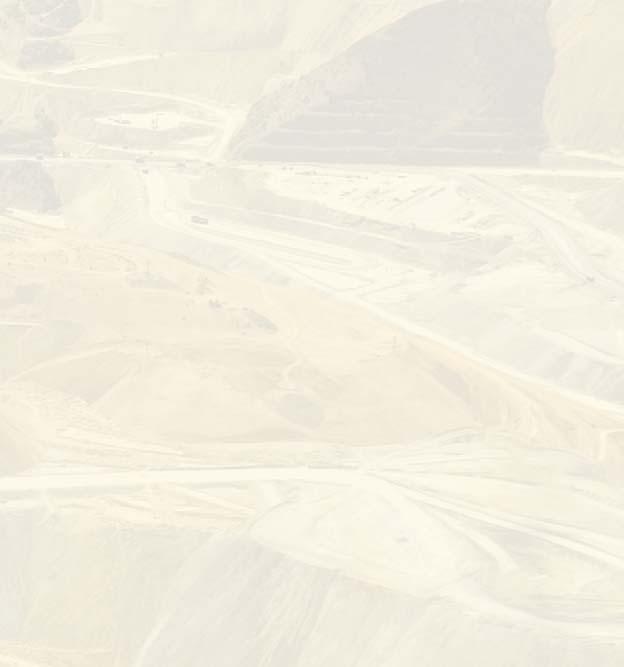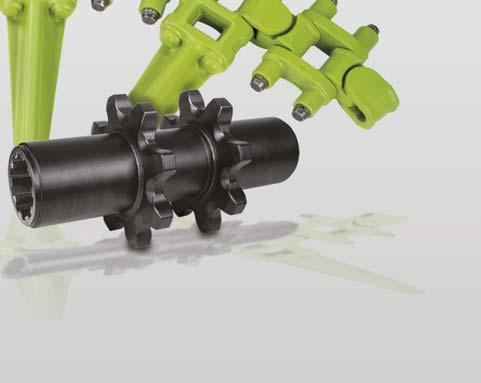
9 minute read
Everyone’s Talking About Copper















Michèle Brülhart, The Copper Mark, Switzerland, examines the important role copper is playing in the global transition to a green economy, as well as some ways copper production itself can become greener still.
In its May 2021 report on ‘The Role of Critical Minerals in Clean Energy Transitions’, the International Energy Agency (IEA) reaff irmed the vital role which critical minerals will play in supporting the transition to a decarbonised, green global economy by providing the essential materials for the development and use of the major clean energy technologies.1
Copper, in particular, is a critical material for almost all clean energy technologies, including: solar photovoltaics (PV), wind, bioenergy, electricity networks, electric vehicles (EVs), and battery storage (Figure 1). Driven by the growing investment in green and carbon zero technologies, the demand for copper continues to rise and is such that it cannot be met through recycled copper alone, meaning that it is not a guarantee of lower emissions overall. It means that promoting decarbonisation in the copper industry, even as production of copper increases, will require innovation on the part of actors across the supply chain.
It is essential that innovation and adaption within the copper industry does not focus exclusively on eff orts to decarbonise. The industry is challenged to consider broader environmental and social issues, including: water usage, pollution from tailings, and the impact of the copper production on local communities. The future legitimacy of the industry will depend on the ability of actors in the copper supply chain to do no harm and to positively contribute to sustainable development in the local communities and economies within which they operate, by adopting









responsible production practices. As part of this, The Copper Mark is working with companies and organisations throughout the copper industry, in order to enable them to better understand and meet the increasing demands for independently verified, responsible production practices.
Decarbonising the copper supply chain
Before exploring some of the broader themes in terms of responsible copper production, it is important to emphasise that copper demand is expected to increase by up to 50% in the next 20 years alone, and could rise tenfold by 2050 if states remain committed to achieving a low-carbon energy future.2 While the copper industry has a fundamental role to play in accelerating the green transition, it also presents challenges in terms of ensuring that the copper supply chain does not disproportionately increase its own carbon emissions.
There are a number of important and encouraging examples of companies throughout the copper supply chain innovating to address these concerns – reducing their carbon footprint while maintaining and expanding productivity. This includes a number of companies with sites that participate in the Copper Mark: at its Copper Mark-assured Kennecott Utah Copper operations – including its flagship Bingham Canyon copper mine that supplies 15% of the US’ copper demands – Rio Tinto has entirely phased out the use of coal to power its mining, recycling and crushing operations, and now instead uses solar and wind power. This has reduced Kennecott’s carbon emissions by 65%, equivalent to approximately 1 million tpy of carbon dioxide (CO2).3
Elsewhere, Antofagasta has introduced a series of initiatives that has allowed it to achieve a 580 000 t emissions cut between 2018 and 2020.4 This was followed by an announcement from the Chief Executive this year, committing the organisation to net zero emissions by 2050.5 Furthermore, in a world first, this May Aurubis’ smelting and refining operations developed the first copper anodes produced with hydrogen, introducing another low-carbon energy source into the copper production chain.
There have also been positive trends around the increased recycling of copper – another important means through which the copper industry can address the challenge of decarbonisation, as copper recycling can require significantly less energy than mining.6 Approximately 50% of the copper used in Europe now comes from recycling, and globally copper recycling now saves up to 40 million tpy of CO2. 7,8 Despite this progress, recycling processes are not carbon neutral either, re-emphasising the importance of innovation at the mining, smelting, refining and fabricator levels of the supply chain, in order to promote zero-carbon methods of copper production and manufacturing.
Broader social and environmental considerations
Figure 1. Critical mineral needs for clean energy technologies.1 While promoting decarbonisation should remain an important focus for actors in the copper supply chain, it must also be understood in the context of broader social and environmental challenges, which the rising demand for copper will only make more pronounced. A rapid transition to a net-zero global economy – driven by the increased extraction of minerals and metals – has the potential to magnify social and environmental challenges which already exist.9
One of the most significant negative outcomes eff ected by the increased demand and extraction of copper, particularly from ores of lower grade, is the growth in copper waste – oft en in the form of copper tailings.
As highlighted in the OECD’s 2019 report, copper waste and tailings can lead to serious contamination of land and water, severely impacting local communities.10 Growing concern around the pollution caused by copper tailings has led to positive examples of innovation within the industry with a view to mitigating the negative social and environmental impacts. In 2020, for example, the Global Industry Standard on Tailings Management was launched in response to the Brumadinho tailings dam disaster.11 The standard was developed under the leadership of The International Council on Mining and Metals (ICMM), the United Nations Environment Programme (UNEP), and the Principles for Responsible Investment (PRI). It underlines the need for a more collective approach to tailings management, in order to help prevent catastrophic failure and enhance the safety of mine tailings facilities across the globe. This kind of action is an important step in the right direction, but more must be done by companies at the asset level – both to reduce harm to people, and to minimise the





environmental impact in the communities within which they operate.
Water usage is another factor which must be taken into account when assessing the impact which the growing demand for copper has on surrounding communities and the environment. Water is used in the copper industry for a variety of purposes, including: direct and indirect cooling, waste transport, flotation, slag granulation, and electrolysis. In Chile, the largest copper producing country in the world, recent forecasting suggests that the industry’s consumption of continental fresh water could reach 14.53 m3/sec. in 2029, equivalent to an increase of 12% on consumption in 2018.12 As this freshwater usage rises, so too does the risk of extreme water shortages and knock-on negative impacts for the rights of local communities, as well as on agricultural productivity. In 2019, Chilean water usage for mineral mining, combined with an 80% drop in rainfall, left the country facing its worst drought in a generation.13 Going forward, it is vital to ensure there is access to water for water rightsholders and that they are supported in implementing the latest water conservation technologies and practices.
There have been positive improvements in this direction. At the Escondida mine – which participates in The Copper Mark’s Assurance Framework – BHP and Rio Tinto have jointly invested US$3.43 billion into developing a desalination plant to reduce their reliance on freshwater, and BHP has pledged to stop using fresh water drawn from the surface and underground in Chile by 2030.14 While these are positive developments, the use of continental fresh water in Chilean operations continues to rise in absolute terms, highlighting the need for greater action to reduce freshwater usage.
References
A comprehensive list of this article's references can be found on the Global Mining Review website: www.globalminingreview.com/special-reports/ YOUR MINING MACHINE DESERVES THE BEST CHAINS Cincinnati Mine Machinery Company designed and installed the first Dual Sprocket Conveyor Chain. Our unique design utilizes superior metals and a proprietary heat treatment process for unparalleled strength. Our Dual Sprocket Conveyor Chain runs longer and stronger which means less downtime and lower cost per ton. So when it's time to choose, choose the strongest chain under the earth. For over 90 years, Cincinnati Mine Machinery continues to be THE STRONGEST LINK .
Conclusion
Both the concerns around tailings pollution and rising water usage for copper operations illustrate the importance of promoting responsible production practices, which go beyond the imperatives of decarbonisation. Within this, there is an important role to be played by downstream copper users, particularly in terms of conducting the necessary due diligence and engaging closely with their suppliers, in order to ensure that the copper they use has been responsibly produced. The copper industry as a whole has a vital role to play in working to prevent, mitigate and remedy negative environmental and social externalities, and to positively contribute to sustainable development in the local communities and economies within which it operates, through responsible production practices.















